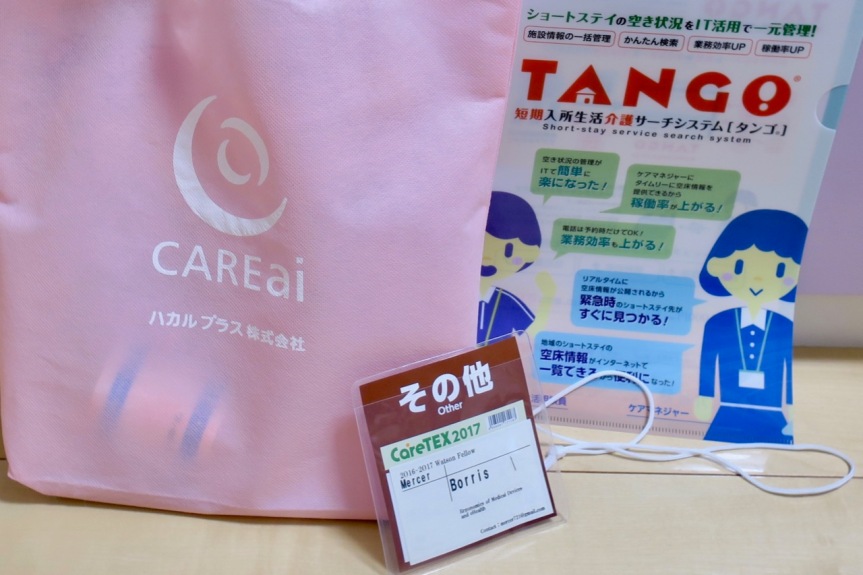
The second expo I went to at Tokyo Big Sight was called CareTEX, and it was all about health technology for the nursing industry. I saw a much wider range of health technology there than I had seen before, since CareTEX was specifically focused on technology for health and medical purposes (unlike the first expo I attended, which had many categories under the umbrella of tech and design). CareTEX even had a “special exhibit counter” with booths for all the companies making nursing care robots! I saw multiple different robots, wearable devices and patient monitoring solutions; hearing aids, sanitizing equipment for hospitals and clinics, special gloves for arthritic patients, and more. I also saw some of the same devices and equipment I had seen at the last expo, such as wheelchairs (although more varieties) and massaging machines.
(Note: This post is a follow-up to my most recent post, here, about the first expo I went to).
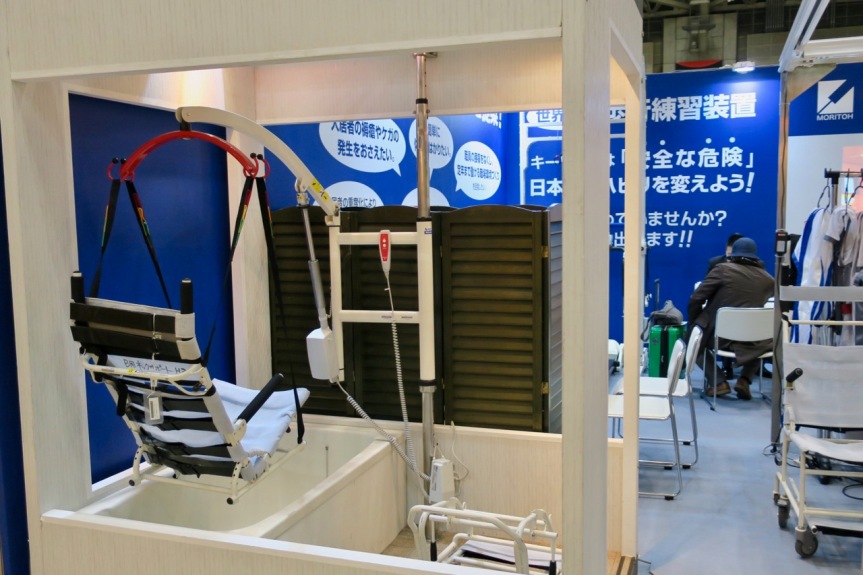
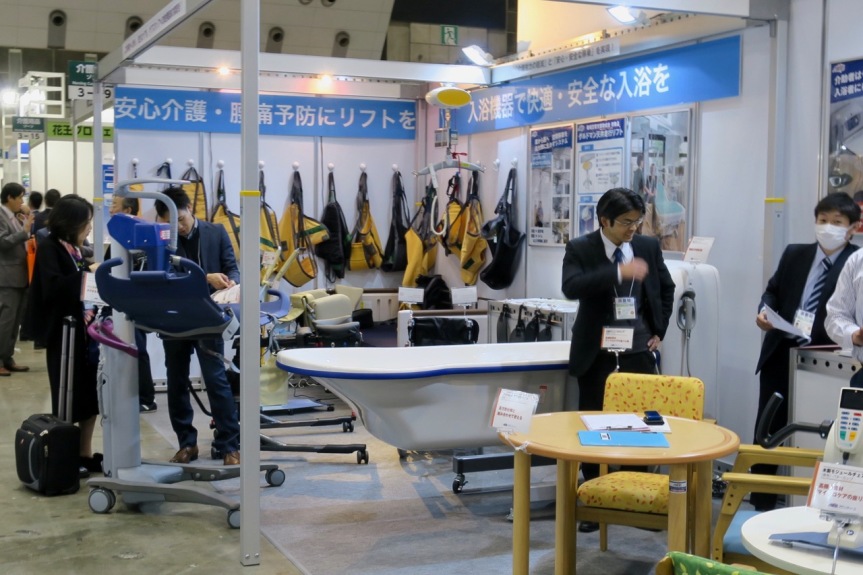
I also saw some health products that were not so obviously related to technology, such as different brands of face masks, workout clothing with special fabric blends, underwear for incontinence patients, and even food. I was a bit confused by the food – there seemed to be a few stalls promoting healthy meals and giving out samples – and my guess is that they are food suppliers for hospitals. Another company was giving out mini paper cups filled with treated water (which was intriguing to me, as the tap water is drinkable all over Japan. That said, my host families here have both used water filters, so I suppose there’s something to being extra cautious).

As at the first expo, much of the information was in Japanese. But still, since it was an expo showcasing Japanese companies for Japanese customers, I’m almost glad that it was difficult to navigate using only English. I wish I could have fully participated by asking people questions in Japanese, but the extent of my usage of the language at the expo was to say things like “Hello! Do you have any information in English?” Usually the answer was no, but I still tried out a few products and spoke to the English speakers I did come upon.
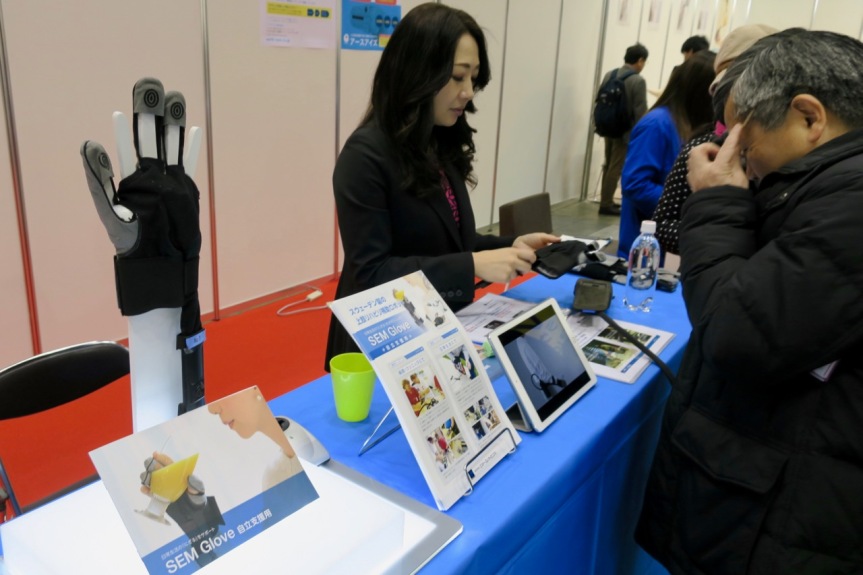
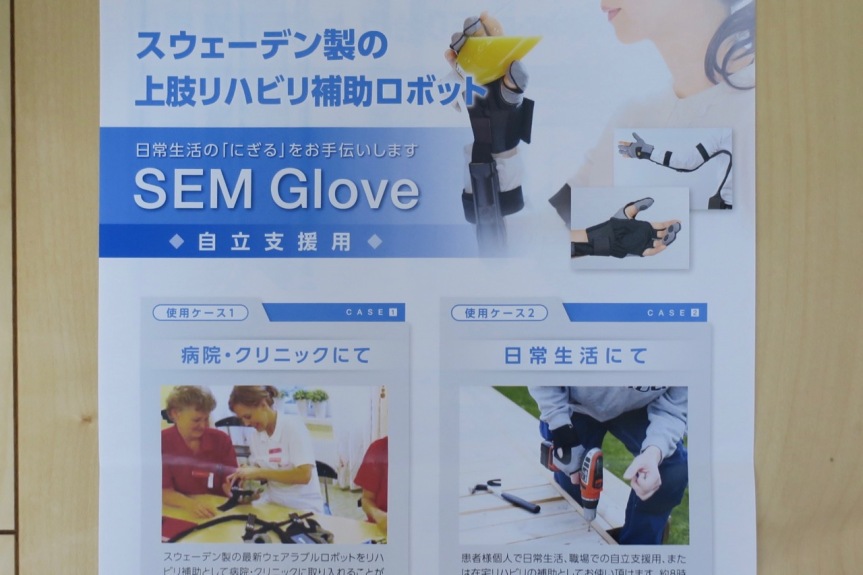

I found a rare English speaker at the booth for Sivantos, a large worldwide hearing-aid company. This man at Sivantos told me that 14% of the people in Japan with hearing impairments have hearing aids – compared to 50% of hearing-impaired people in the U.K. I asked why, and he said that hearing aids in Japan are very expensive, with the government barely covering the reimbursement cost. He also added that there is a stigma against revealing that you have a disability. (If there is a stigma in Japan against small hearing aids, which I thought were pretty normalized across the globe at this point, I really can’t imagine someone using that assistive glove here).
In response to this stigma, Sivantos has made a range of colorful hearing aids to get people excited about using them, especially children. This reminded me of Cochlear, who offers a similar set of brightly-colored and patterned cases for the external part of the cochlear implant. The man I was talking to also pointed out Sivanto’s advertising – he gestured to a long banner depicting an older man with Japanese text and asked me “Do you know who that is?” I didn’t, but he is apparently a famous Japanese skier who wears hearing aids, which were invisible in the photo. The Sivantos man said that more Japanese people will feel comfortable with hearing aids if they know that this celebrity wears one and is okay with promoting it. It was cool to see a company adapting and responding to its cultural environment – that’s really what I’m looking for when I survey these companies.
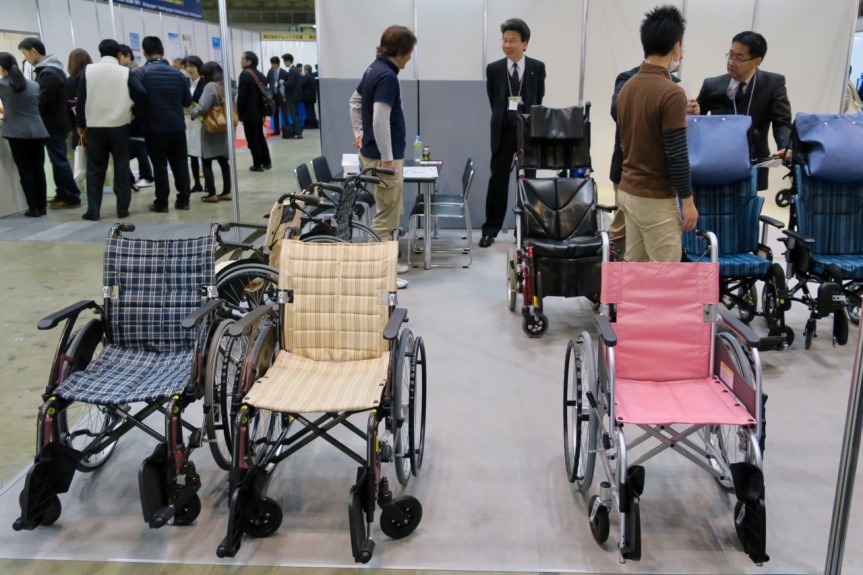
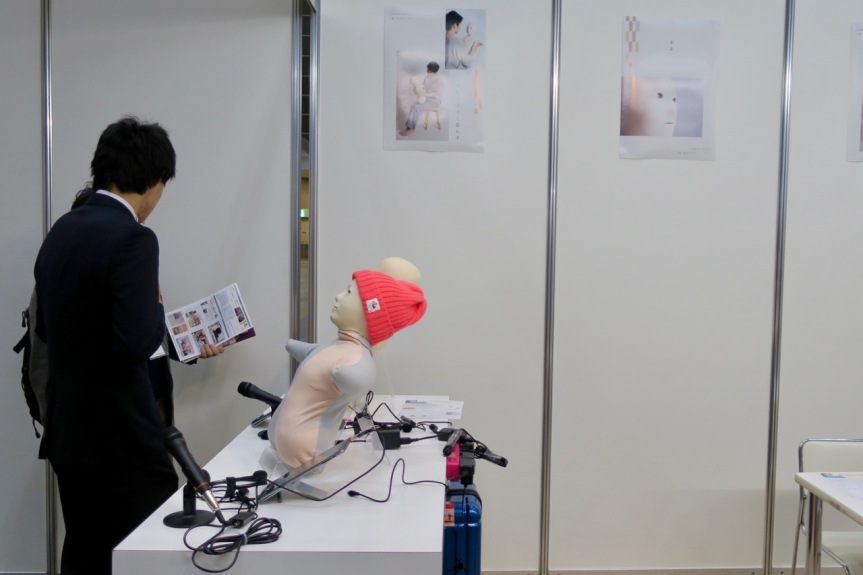
One of the biggest devices I saw at this expo was a large dining room table with an oversized tablet built into the surface. Loaded onto the tablet is a basic swiping-on-the-touchscreen game that gets faster and more difficult with each level (I tried it out). The company told me that the goal of the game, and the tablet in general, was to engage elderly people living at home. They said that elderly people at home often have limited mobility, so they end up spending large amounts of time sitting at the dining table with nothing to do, which can be lonely and frustrating (and of course in Japan, there is an enormous elderly population). The aim of this table, with this game, is to give those people something to do and also help them keep up their motor function.
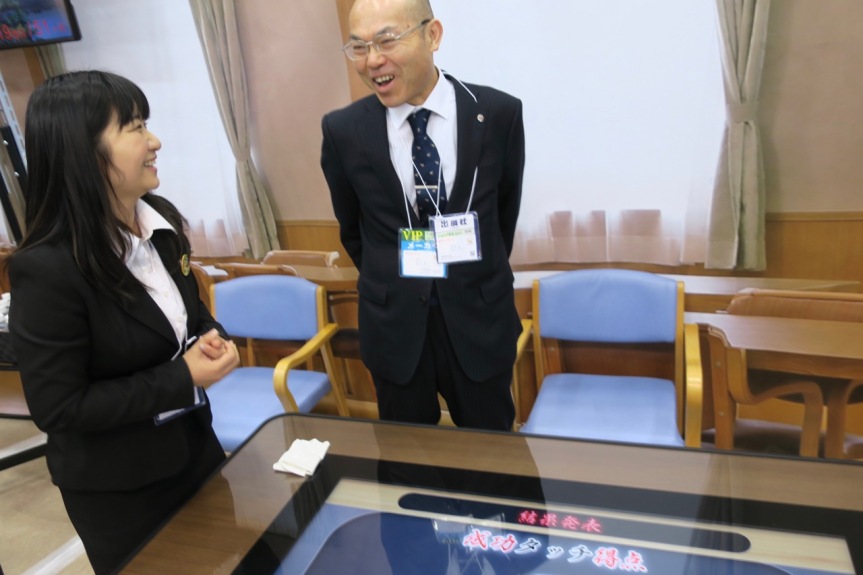
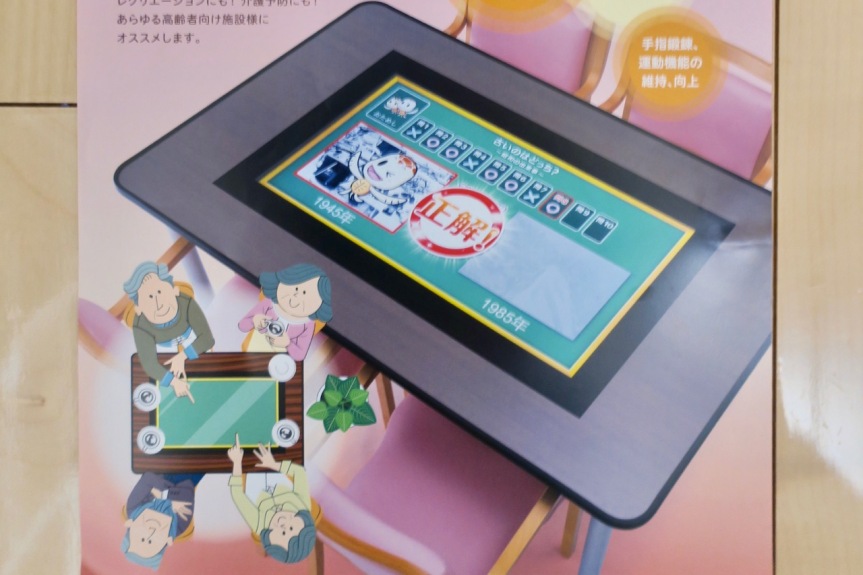
It was a big operation – the table and tablet both looked custom-made, which would make the whole device very expensive, and of course it was physically large. While I appreciated the sentiment behind the tablet-table, I had never heard of anything like it, and I thought to myself that maybe there was a cheaper or simpler way of addressing the problem at hand. The table hasn’t hit the market yet and will apparently be ready in July, so it’s impossible to say how it’s been received by real users or if it will face success or failure in the market. I asked the people at this company if they had done any user testing (to see how potential users might react to the table and if they feel as though they would benefit from having one). I’m not sure if my question really got across the language barrier, but the company people said that they would do user testing in July – the same time as the product’s release date. If that’s right, that means no, they don’t know how people will react until they start selling the table. That is a ton of development for a large table that is probably quite expensive…and no user testing to verify that this is a product needed or wanted by the elderly population.
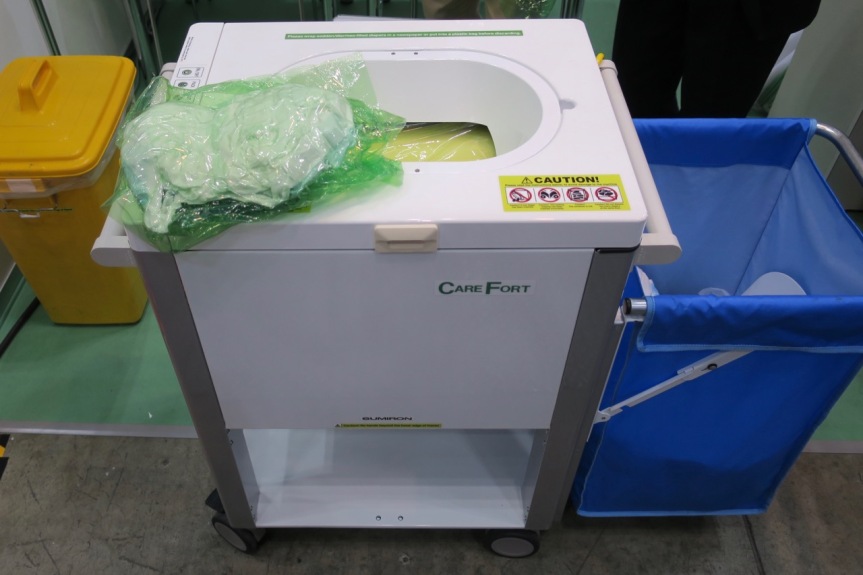
I saw an overwhelming array of products that day, many of them cool and some of them crazy. But by the time I left the expo, I was starting to become disillusioned about the amount of fancy tech I was seeing. There are so many competing companies that are all doing cool and interesting things. Once I saw my seventh care robot, I started to wonder: when is the market saturated? At what point do you stop?
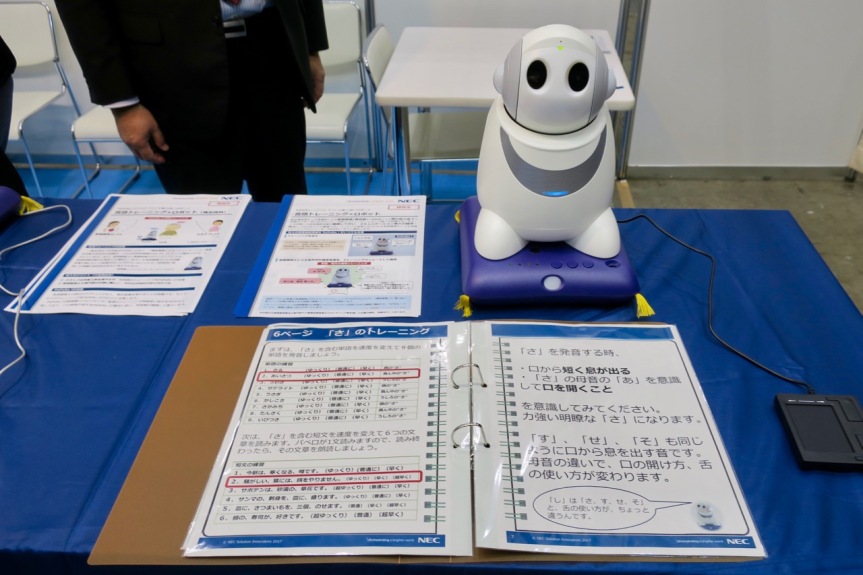
Most importantly: how do you actually ensure that you’re improving people’s health? As amazing as these devices are, I’m not always clear on how they actually help people. These ideas and products cost a lot of resources and money, and I’m not sure if all that expense is justified. I wonder if some of those resources could be spent on effecting more direct change, like increasing government subsidies for hearing aids or lowering hospital fees. I’m reminded of an early project conversation in Sweden, in which a wheelchair company recommended that I ask medical technology companies the following questions: a) how do you verify that there’s a real need for your product (that your idea is good, and original, and address a real problem), and b) once you’ve made the product, how do you validate it to make sure that it works well and fixes that problem? Ideally a company would have good answers for both questions. Their methods for verification and validation, or lack thereof, can be quite revealing. In Sweden, the discussion of human factors or ergonomics came up often, and most companies seemed to care about doing user-based testing to keep in touch with their users’ needs at every step in the design process (which would be the verification step – the answer to question a) above).
So, it’s clear that Japanese companies are into cool innovation. But are they into ergonomics? That doesn’t seem to be the case. Does that mean that the care robots, and all the other fancy health tech I was excited about seeing, doesn’t really have an impact on people’s health here? It’s hard to say.
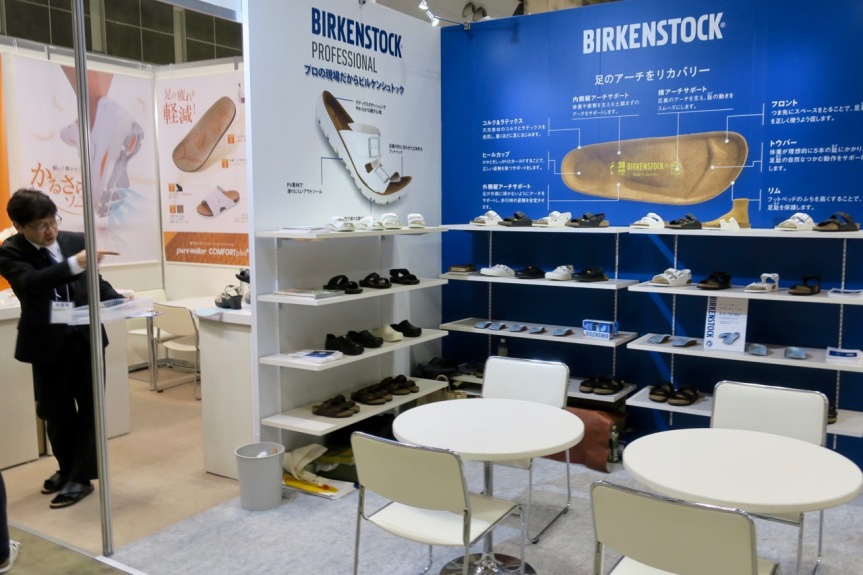

Reblogged this on Sanbot Robotics.
LikeLike